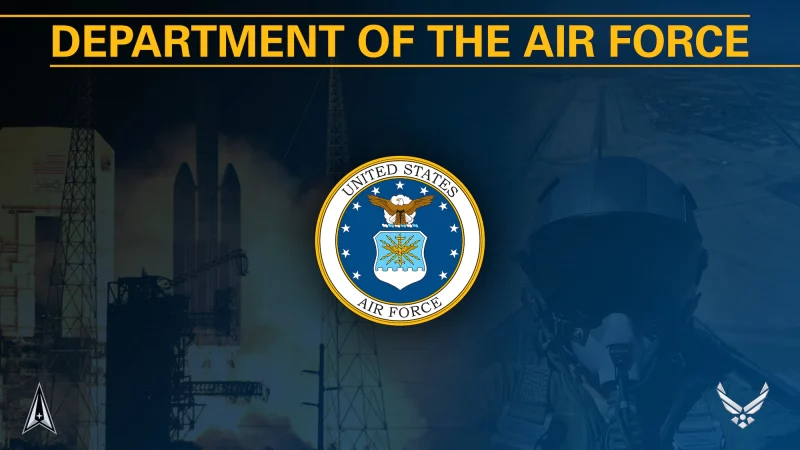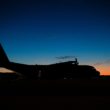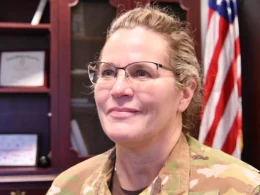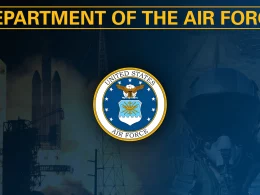WASHINGTON —
While the United States military remains “the best in the world,” Department of the Air Force Secretary Frank Kendall said Jan. 19 that the Air and Space Forces must move quickly to adapt and modernize to offset actions by China and others that have dented the “presumption of superiority” held by the U.S.
Kendall offered the assessment during a 45-minute “virtual fireside chat” sponsored by the Center for a New American Security or CNAS, a Washington-based think tank that is influential on questions of national security and defense policy.
What the U.S. and the Air and Space Forces face today, he said, “is a major change from the last 30-odd years. We cannot go forward with a presumption of superiority that our military dominance demonstrated in the first Gulf War. … A lot of things can change in 30 years and they have.”
In broad strokes, Kendall emphasized a familiar set of themes and concerns that he has voiced since becoming the Department of the Air Force’s highest-ranking civilian on July 28, 2021. The rise of China and the threat it poses in the Pacific is the top concern, alongside continuing concerns about Russia. Both pose a far different set of problems to the security of the United States and its allies following a decades-long focus on fighting terrorism.
The path to solving that disconnect, Kendall said, was the catalyst for what he calls his seven “Operational Imperatives.” Most of the questions and discussions during the CNAS session touched on his operational imperatives. Kendall said the seven categories of effort are necessary to reconfigure the Air and Space Forces to address the dramatically changed security environment of today.
As Kendall noted during the discussion, this is not some vague, academic exercise.
“I’m trying to instill in the whole department a sense of urgency … these operational imperatives are the things we have to do to be successful and to have a successful deterrent,” he said.
“These problems are already upon us; they’re not future things we have to worry about at some time five or 10 or 15 years down the road. They’re here now. We have to address them with a strong sense of urgency,” he said.
Kendall summarized the Operational Imperatives before addressing questions.
The first is a “resilient space order of battle.”
Space is a far different and more dangerous place these days, Kendall said. But it also remains critical to virtually everything the military does since space is a conduit for intelligence, navigation, communication and other essential capabilities.
“We recognized space was a contested domain and we had to take aggressive action to protect our assets in space and also to deal with the threatening assets that potential adversaries might have,” he said.
The second is refining and focusing two connected efforts to form a fully networked, multi-domain, joint and universal command and control system that can link all branches of the U.S. military at virtually all command levels. The overarching effort is known as Joint All-Domain Command and Control or JADC2. The Department of the Air Force’s contribution to the effort is known as the Advanced Battle Management System or ABMS.
Kendall said he agrees with the premise that linking sensors to data management and advanced command and control systems will allow for better sharing of information faster, so that decisions can be made in a way that will trigger an array of responses that no adversary can fully address or defeat.
But he wants ABMS requirements to be more tightly defined. “We need to focus it on things with the highest operational payoff,” he said. An integrated network “is the right general direction but I don’t think enough focus has been placed on figuring out where exactly to invest to give us the greatest operational return.”
The third imperative, he said, is identifying the components of the NGAD, or Next Generation Air Dominance, program. Unlike previous modernization efforts that featured a singular and new, next-generation platform such as the F-35 fighter, Kendall said he foresees a collection of capabilities – including a manned platform teamed with multiple uncrewed air combat aircraft – that can operate as a unit.
That approach will dictate, “how that platform will fight within a system-of-system context. That system-of-systems to me includes unmanned platforms, it includes … how we do battle management for the larger force,” he said. “It will define in more clarity what else we need beyond an advanced platform that is the follow-on to the F-35 and F-22.”
The fourth imperative will refine the Air and Space Forces’ ability to find, identify and evaluate “target acquisition at scale.”
“The whole idea of ABMS starts with the acquisition of things we need to worry about and giving us high-quality information so we can prosecute those targets, those threats, as effectively as possible,” Kendall said, pointing out that there is overlap among some of the imperatives.
He also noted that the seven focus areas combine both new and traditional concerns.
The fifth Operational Imperative is one of the traditional ones – resilient basing. Kendall wants to update this concept, using a practice known as Agile Combat Employment, or ACE. This idea would move the Air Force from operating out of a small number of very large, fixed airfields to a constellation of smaller, more mobile and “agile” facilities that would make it more difficult for adversaries to target.
China, he said, has aggressively added weapon systems and tactics designed to damage or destroy large, fixed, well-known facilities. “ACE,” he said, “is designed to make that problem harder for an adversary. That is a piece of the solution but we have to figure out exactly the investments we need to make in the mix of defenses, hardening, deception and proliferation.
“We’ve made some progress in that area but we need to be much more specific about the needed investments and allocate resources to them in a cost-effective manner,” he said.
The sixth imperative is also traditional – readiness. “We have a deterrence-based strategy that’s backed up by the ability to fight effectively if deterrence fails,” he said. “Being able to fight effectively depends upon mobilizing our force, moving it to where it needs to be, and supporting it when it’s there.”
The seventh and final imperative focuses on modernizing the Air Force’s global strike capabilities. That effort features the continued development of the B-21 bomber itself and also includes other components ranging from uncrewed air combat aircraft that can operate in tandem with the B-21 platform to off-board sensors and command and control systems. Similar to the NGAD effort, Kendall said achieving the goals behind the imperative requires a focus on capability rather than “platform alone.”
“The B-21 platform is a part of that, but it’s a system-of-systems that surrounds the B-21 that makes it effective,” he said.









